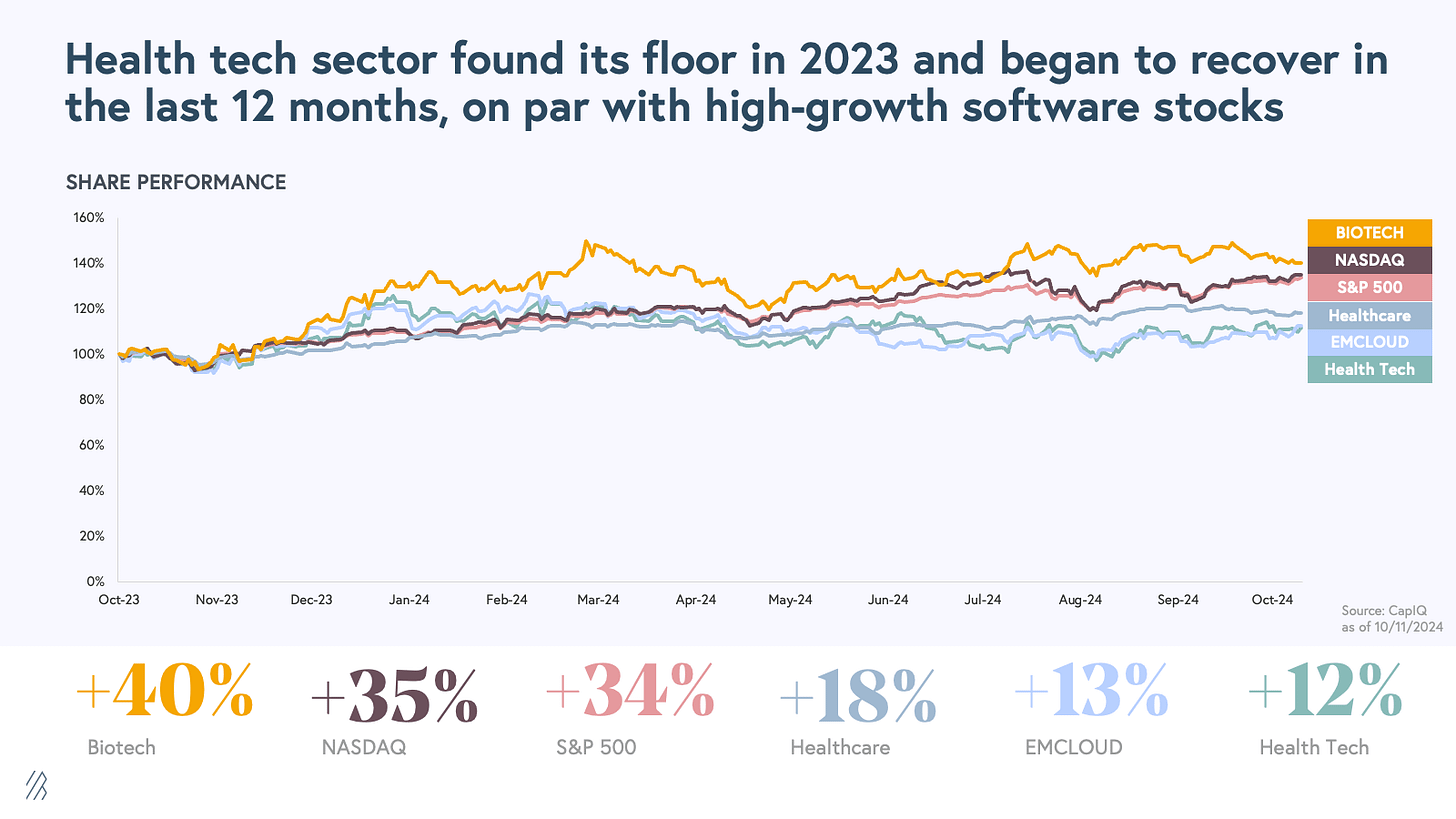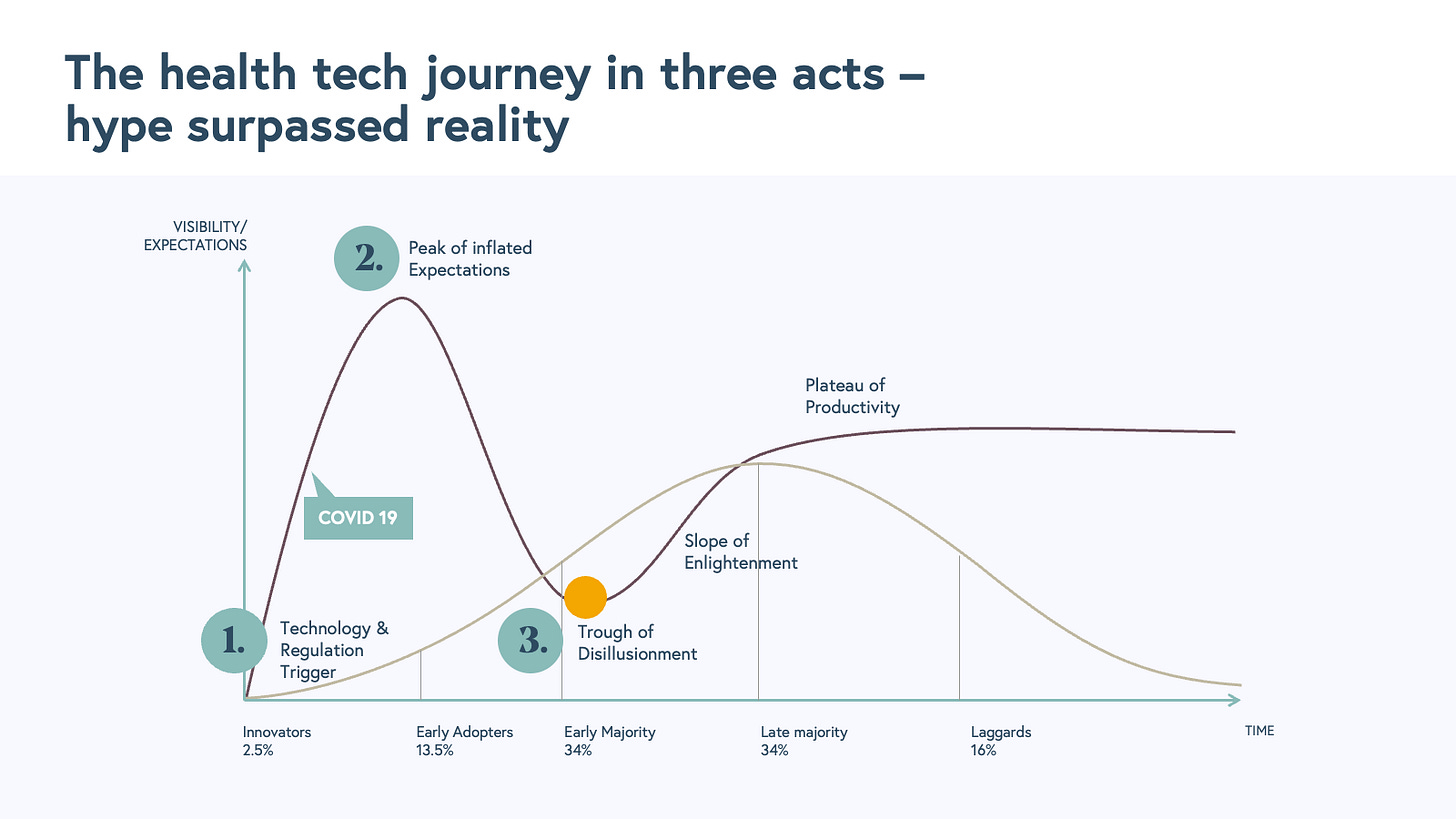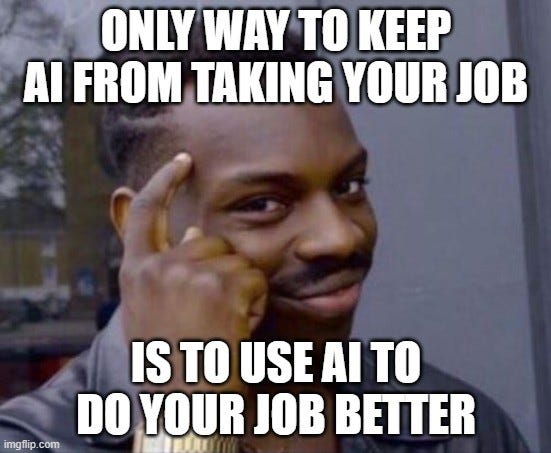🩺 The Bulletin #60: Optimism in Health Tech & Anthropic's Claude AI Update
Welcome back! In this week's bulletin — a retrospective view on healthtech in 2024 and Claude AI pushing the frontier of AI capability 🌟
Hi there! I hope all of you are doing well as the fall season settles in. 🍂
Thanks for stopping by! 😊
💡For this semester, keep up with our content if you’re interested in:
Demystifying & breaking into VC
Finding opportunities in the start-up world
Keeping up with VC investment news at Brown & beyond (pro tip: this is essential to breaking in and finding opportunities)
Let’s jump straight into it.
🏥 Looking Back: How 2024 treated Health Tech
Health tech has been having a rather underwhelming performance over the last couple of years. Around this time last year, I read Bessemer Venture’s, State of Health Tech 2023, which had great insights about the quiescent nature of health tech and future predictions. Recently, I was pleasantly surprised to find BVP’s 2nd edition, State of Health Tech 2024 in my inbox. After reading both, I thought it’d be a fun thought-experiment to compare between the two and see what big of a difference one year can make. Lets dig in.
Comparing Public Market Performance
According to BVP’s 2023 edition
“Over the past five years, publicly traded health tech companies have underperformed major market indices… Public health tech companies have experienced an average share price decline of 28% since 2018, whereas Nasdaq, S&P 500, and BVP Nasdaq Emerging Cloud Index companies, as well as publicly traded legacy healthcare players, have all appreciated in average share price over the same period.”
The analysis of public market performance consisted of 32 health tech companies that served as a proxy for the health tech index.
In stark contrast, when comparing share price in 2024 with two added companies to the index: Tempus and Waystar, we notice a large margin of growth from -28% (2023) to +12% (2024).
Justifications
BVP’s main focus for health tech’s stagnation in 2023 revolved around the idea of a cycle of health tech that goes through 3 phases:
Technology/regulation trigger 📈
Over 50% of the companies in the index were founded by in the 2010’s, spurned by new regulations and cloud software, ultimately leading to an era of digital health companies. With the onset of COVID-19, health tech companies rushed to fill in any gaps, leading to rapid growth.
Peak of inflated expectations 🏔️
Starting from February 2021 to May 2022, health tech experienced a large decline of 60% loss in stock value. This was largely due to corrections to the brief period of excitement at the start of the pandemic.
Trough of disillusionment 📉
After the trough was experienced in May 2022, there’s been more stable performance across health tech companies, with increased activity like CVS Health’s acquisition of Oak Street Health for $10.6B.
In contrast with 2024 outcomes, it may be that health tech is slowly switching from stabilization to a return to phase one. Beyond positive market performance (evidenced from the graph above), there has been other key indicators of traction.
Continued growth of recently IPO’d companies both within and outside BVP’s health index
Pre-money valuations are back at their peak levels from 2021:
Series D+ companies are able to command higher valuations based on solid unit economics, scalability and growth, while seed to series C companies that are have inspired higher valuations through an AI-focused lens.
Strong adoption of AI SaaS in health tech:
Integrating AI into software-as-service healthcare companies have automated large parts of their business model, leading to rapid scalability and economies of scale.
🕹️ Anthropic’s Claude AI to Control Screens
Anthropic’s latest update detailed the improvements of its current Claude 3.5 Sonnet model as well as a new model, Claude 3.5 Haiku to be released in an upcoming month. Growth is always great to see. But that’s not all. 😲
The “apple of the eye” so to speak of Anthropic’s update is the introduction of a computer use API which effectively allows Claude to use the computer just as a human would. 🤖
Immediately, I thought back the pandemic days and playing around with the Zoom screen-control function. While that technology seemed wild back then, it’s even wilder to imagine that we’re now at a stage where our own computer can control itself the way we want it to. Alas, here we are.
Computer Use Functionality Envisioned
What I love about this Anthropic’s computer use is its boldly different approach. Whereas most companies like Microsoft and Salesforce are keen on building AI agents to automate specific tasks, Anthropic is testing the idea of having a model focused on general computer skills. The premise of their idea is for Claude to complete repetitive tasks on a broad range of tools and software programs. 🔨
Say, for example, filling out a form with all the right data from your computer. Or, consistently testing and iterating software in automated fashion. The possibilities are endless. 🚀
How it works
Everything starts with a normal query: Hey Claude, can you help me fill out this job application? (preferably more detailed to your personal request) 📝
From there, Claude does the following:
Take screenshots of the computer screen to analyze the content and its usefulness to fulfilling your query 📸
Access the opened browsers and files by moving the cursor and extracting information. If information is not available on the currently opened browser, Claude will access other databases/browsers/files as detailed in the request 📂
After finding the pertinent information, Claude will perform the action detailed in the request (ex. fill out each individual input in a form) 🤝
Check the video below for the short demo!
Thoughts Moving Forward
Some key considerations moving forward:
Efficacy: It’s important to note that computer use is still in its infancy and is still very much error prone. Claude tested this feature on OsWorld, which measures the AI model’s ability to use the computer as a human would. Claude’s 3.5 sonnet scored 14.9% with just screenshots and 22% with additional instruction. While a large margin of improvement remains, Claude’s model bests the previous highest scoring AI-model at 7.8% efficacy.
Security: the introduction of computer control serves as yet another vector for security concerns like spam, fraud, or personal identity theft. Although Claude’s analysis of the safety of their model remains at the ASL-2 level outlined by their Responsible Scaling Policy, there remain concerns of cyberattacks or fraudulent activity especially with an election fast approaching.
Believe it or not, we are now entering a new era of integrated computer use capabilities where human thought and computer action dissolve seamlessly into a natural dialogue. I’m hopeful that progress, done correctly and safely, will revolutionize how we interface with technology, making repetitive and tedious digital tasks more automated and accessible than ever before. 👨💻
💻 We’re Updating Our Website
We love our website, and want to make sure it is accurate and up-to-date. Please let us know through this form if you are a part of the VWV team (Investment Committee, Advisors, Alumni) and have changes you wish to make to your personal profile. We appreciate all of you! 😊
🍎What We’re Consuming In Venture
This piece by Packy McCormick titled, What Do You Do With an Idea?
A blog reflecting on Nimbus Therapeutics as a paradigm of Hub-and-Spoke Models in biotech.
A deeper look into the recent Nobel Prize winners for AI-related research
That’s it for this week, feel free to email me at daniel_k_lee@brown.edu with any inquiries!
✨ Follow us:
Instagram: @vanwickleventures
Twitter: @VanWickleV












